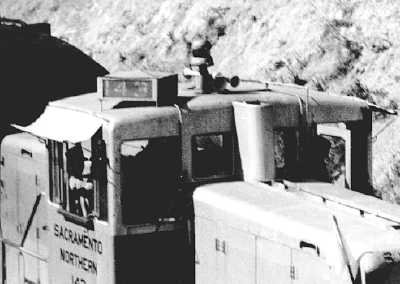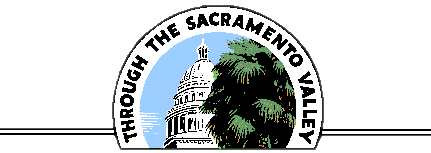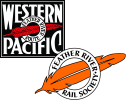SN's UNIQUE NUMBER BOXES
Among the most distinctive features of Sacramento Northern locomotives were the four-faced number boxes used on the line's 44-ton GE diesels. Although some other Western Pacific-family locomotives had roof-mounted number boards (WP FTs and TS 70-tonners), none were like the SN's.
The boxes were constructed of steel sheet, strip and angle stock. They measured 13 inches high by 30 inches wide on each face. The top was a very flat pyramid shape to shed rainwater. Curiously, the boxes were not rectangular, but were slightly diamond-shaped, probably to allow better visibility when viewed from the sides. The plans presented here do not show the bottom, but it was apparently a flat steel sheet. Inside the box was a two-bulb light fixture (one bulb as a back-up on a separate circuit). It is not known what voltage the lights used, but current was apparently fed by a conduit which ran from the forward engine hood up the face of the cab. The lights were serviced by unbolting the cover.

Special thanks to Scott Trostel for his description of the number box on ex-SN 145. The drawing was based on an earlier sketch by Duane Karam using measurements taken by Bob Wigner. It was provided by Richard K. Young. Additional data from Robert A. Campbell, Sr.
The boxes were mounted on short legs of different lengths to allow the whole assembly to sit level. The legs were welded directly to the cab roofs. In all available photographs, the boxes appear to be mounted above the engineer's seat, with one corner in line with the forward window post.
The boxes were apparently applied to the locomotives within a year of their 1946 delivery. A photo of 145 in Joseph Strapac's Western Pacific's Diesel Years dated 1947 clearly shows a box. Assuming this date is correct, at least some of the locomotives had their number boxes applied during 1947. The work was done at the Mulberry shops in Chico.

Our drawing is based on measurements taken in 1960 of the box used on SN 147. There is no guarantee that this box is identical to those used on the other 44-tonners. This box was applied to SN 147 at the WP's Sacramento shops when the locomotive was purchased in May 1957 (though it had been on the SN since August 1956). This was almost ten years after the boxes were applied to her sister units. It is possible that SN 147's box was not built to the original plans. It is also possible that SN 147 received the box from SN 141, which had been sold in September 1956. The box was not on this engine while it served its next owner, the Springfield Terminal, though it might also have been removed by General Electric when they remanufactured this locomotive.
The box on ex-SN 145 was the last one known to survive. It was still attached to this engine when received by Shepard Grain Company, but removed and scrapped when the locomotive went into service as their No. 3. The box from SN 146 was removed by the Northwest Oklahoma Railroad during their ownership of this locomotive. It apparently sat around their shops for sometime before being junked. In any case, it was not on the locomotive when it arrived at the Western Pacific Railroad Museum. All the other boxes were apparently scrapped with their locomotives.


